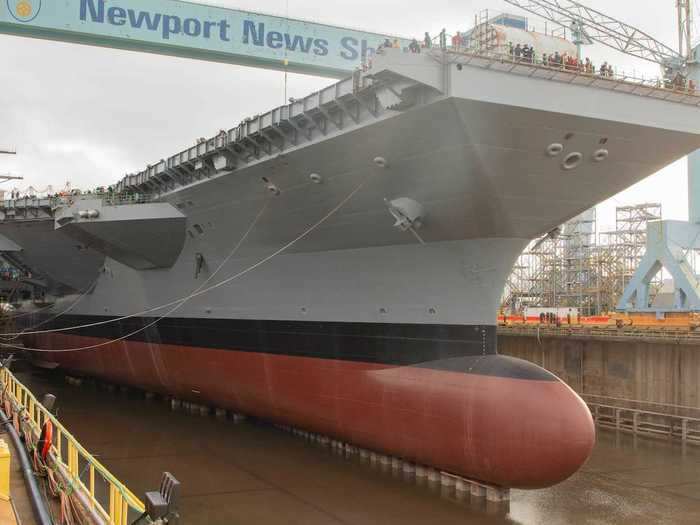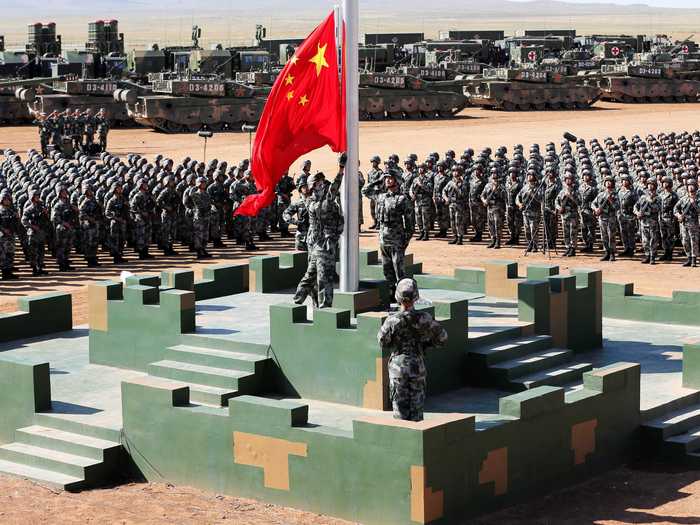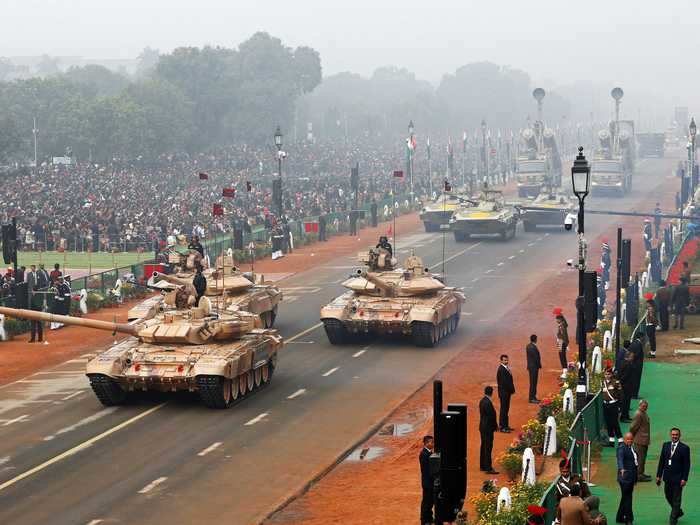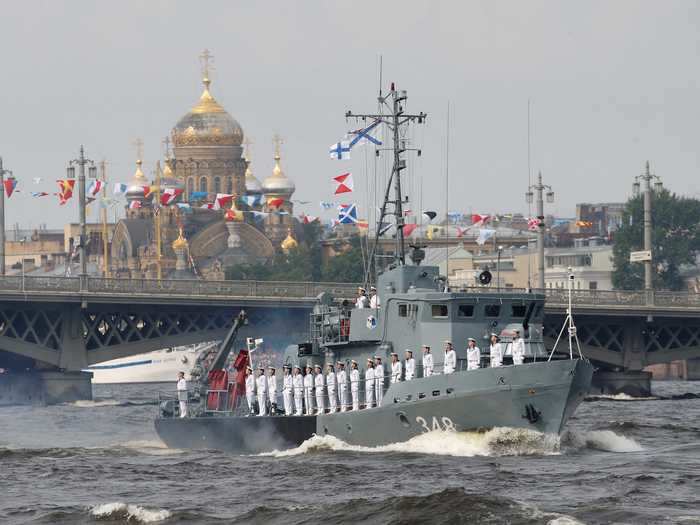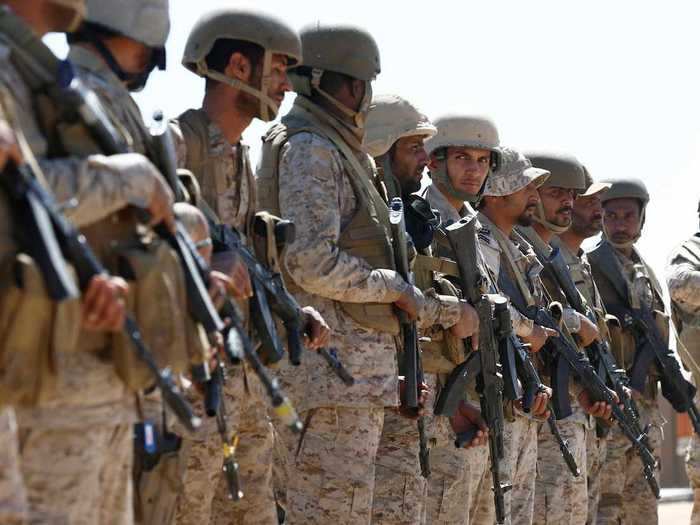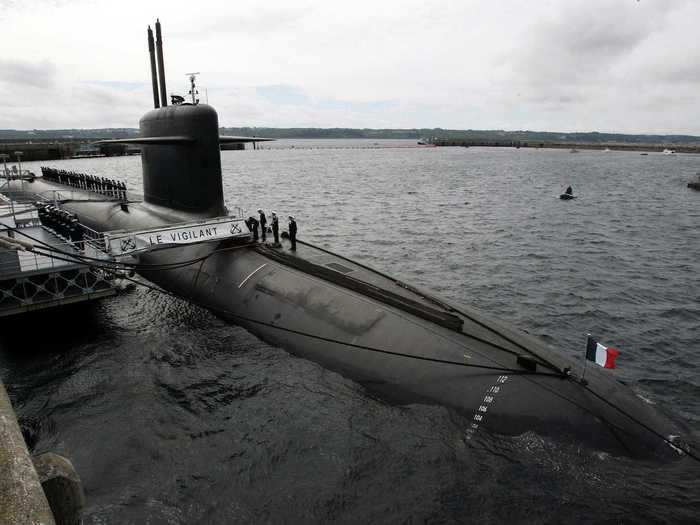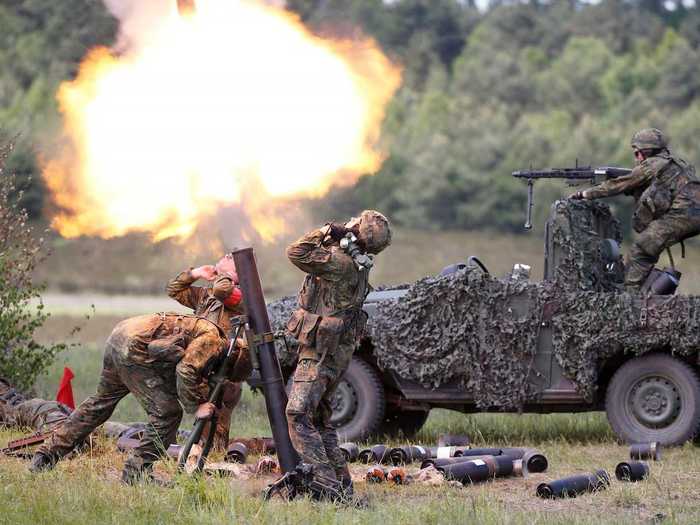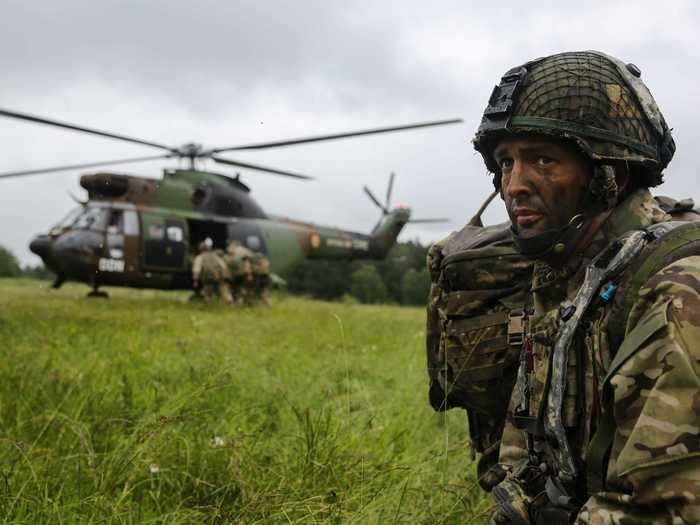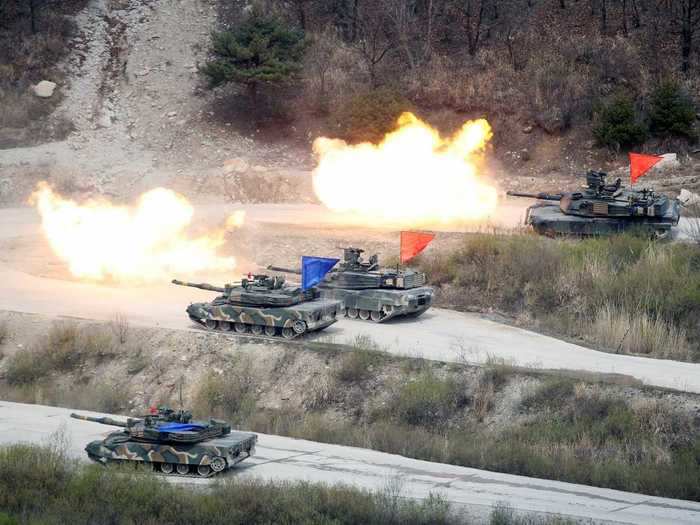Global military spending just saw its biggest spike in a decade, but the US outspends everyone else by far
Christopher Woody
- Global military expenditures rose in 2019 to the highest level since 1988, according to the Stockholm International Peace Research Institute.
- The US has led the way, spending 38% of the total, but China and India continue to pour money into defense.
- But a coronavirus-related economic slowdown could bring that spending back down to earth in the years ahead.
- Visit Business Insider's homepage for more stories.
Global military expenditure was $1.917 trillion in 2019, rising 3.6% from 2018 and 7.2% from 2010 to reach the highest level since 1988, according to the Stockholm International Peace Research Institute.
World military spending decreased steadily in the years after the 2008-2009 global financial crash but has risen in each of the five years since 2015, the latest in what SIPRI researcher Nan Tian described as four phases in military spending over the past 30 years.
The post-Cold War years saw spending decline in what many saw "as a peace-dividend period," Tian said Tuesday during a webcast hosted by the Stimson Center and SIPRI.
That decline bottomed out around 2000, when the September 11 attacks prompted years of defense-spending increases that peaked around 2010 and 2011, Tian said. Spending fell again in the early 2010s.
"But more recently, in the last three years, we really see that spending has really picked up," Tian said. "The reason is US announcing really expensive modernization programs ... and also the end of austerity measures in many of the world's global spenders."
US military spending grew by 5.3% in 2019 to a total of $732 billion — 38% of global military spending. The US's increase in 2019 was equivalent to all of Germany's military expenditure that year, SIPRI said.
Military spending in Asia has risen every year since 1989, with China and India, second and third on the list this year, leading the way. (Tian said SIPRI's numbers for China are higher than Beijing's because SIPRI includes spending it defines as "military-related.")
"In the case of India and China, we've seen consistent increases over the last 30 years," Tian said. "While India and China really [were] spending in the early 1990s far less than Western Europe ... Chinese spending really starts to pick up since about 2000."
China's spending, now several times that of France or the UK, and India's growing expenditures point to "a change in the global balance," Tian said.
"Whereas a few years ago we saw ... [for] the first time that there are no Western European countries in the top five spenders in the world, this is the first time where we see two Asian countries, in India and China, being within the top three spenders, followed by Russia and Saudi Arabia."
Data is not available for all the countries in the Middle East, but Saudi Arabia is by far the biggest spender for which SIPRI could estimate totals. In terms of arms imports, the Middle East "has now the largest share it has ever had since 1950, as a region," SIPRI senior researcher Siemon Wezeman said on the webcast.
"That's partly related to ongoing conflicts [and] very strong tensions, Iran vs. the Gulf States, Saudi Arabia. It is a very strong driver of arms imports, especially by the Gulf States," Wezeman added, noting that Iran, under arms embargo, is not a major weapons importer.
Most of Africa's military spending, 57%, is done by North African countries. "They have the money," Wezeman said, "especially Algeria, and Morocco to a lesser extent, are basically the big ones buying there."
"Many of the other African countries buy a couple of armored vehicles — a helicopter here, a little aircraft there — and do that every few years. That's basically their armed forces," Wezeman said, adding that fighting insurgencies, like Boko Haram, or peacekeeping, as in Somalia, also drove increased military spending.
Sub-Saharan Africa has seen "extremely volatile spending" in recent years, related to the many armed conflicts there, Tian said. "As countries need to fight ... they need to allocate resources to the military. But conflicts, of course, are extremely destructive on a country's economy," Tian added. "So we see that countries are increasing spending one year, decreasing spending another year."
Overall military expenditures by Western European nations fell slightly between 2010 and 2019, but Eastern European countries have increased their military spending by 35% over the past decade.
"Some of this is really down to a reaction to the perceived threats of Russia," as well as the replacement of Soviet-era equipment and purchase of US and NATO equipment, Tian said.
"European countries, aside from seeing a bigger threat from Russia, also are going through a cycle of replacing their fourth-generation combat aircraft with fifth-generation combat aircraft. So there is a big load of new combat aircraft, mostly or almost all of them US-exported weapons, going to Europe," Wezeman added.
But an economic contraction sparked by the coronavirus pandemic is likely to bring down military expenditures.
"We've seen this historically following the '08-'09 crisis, where many countries in Europe really cut back on military spending," Tian said, noting that military spending as a share of GDP might increase if "GDP falls and spending doesn't decrease as much as GDP."
This time around, spending in Europe may "be stronger in the coming years" despite the coronavirus, Wezeman said, "because the contracts ... in many cases have been signed."
Below, you can see who the top 10 defense spenders were and how much of the world's military expenditures they accounted for in 2019.
Read the original article on Business InsiderREAD MORE ARTICLES ON
Popular Right Now
Popular Keywords
Advertisement

